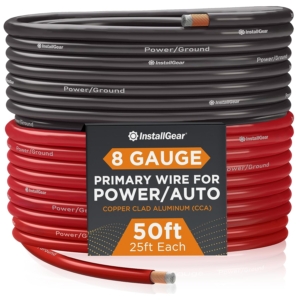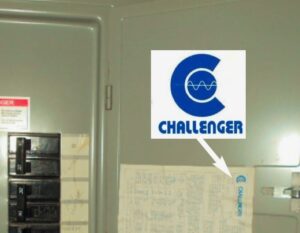AFCI Breakers: Enhancing Electrical Safety
and Preventing Fires
When it comes to the safety of your home’s electrical system, there’s a component you need to know about: the AFCI breaker. This device plays a pivotal role in preventing fires and keeping your wiring in check. But what is an AFCI breaker, and why is it so important? In this blog post, we’ll dive into the ins and outs of AFCI breakers, outlining their purpose, benefits, and why they’re a must-have in every modern home.
What is an AFCI Breaker?
Definition and Purpose of AFCI Breakers
AFCI breakers are electrical safety devices that are installed in residential and commercial buildings to prevent fires caused by electrical arcs. These breakers are specifically designed to detect both series and parallel arc faults, which are common causes of electrical fires.
The purpose of an AFCI breaker is to quickly interrupt the electrical circuit when it detects an arc fault. By doing so, it helps to prevent the arc from igniting nearby combustible materials, reducing the risk of a fire breaking out.
How AFCI Breakers Differ from Other Circuit Breakers
While AFCI breakers may resemble standard circuit breakers in appearance, they have additional capabilities that set them apart. Unlike traditional circuit breakers, AFCI breakers are equipped with advanced electronics that can analyze the waveform of the electrical current. This allows them to differentiate between normal arcing, which occurs during the normal operation of switches and plugs, and abnormal arcing that may cause fires.
Whereas traditional circuit breakers primarily protect against overloading and short circuits, AFCI breakers focus specifically on detecting and preventing arc faults. This targeted protection makes AFCI breakers an essential component of a comprehensive electrical safety system.
Types of AFCI Breakers
Combination AFCI Breakers
Combination AFCI breakers are the most common type of AFCI breakers used in residential and commercial applications. These breakers are designed to provide protection against both parallel and series arcing faults. Parallel arcing faults occur when there is an unintentional connection between two conductors, while series arcing faults occur when there is a break or gap in a conductor.
Combination AFCI breakers use advanced technology to continuously monitor the electrical circuit for any signs of arcing faults. When an arc fault is detected, the breaker trips, disconnecting the circuit and preventing potential fire hazards. Combination AFCI breakers are typically installed in the main electrical panel and provide comprehensive protection for the entire circuit.
Branch/Feeder AFCI Breakers
Branch/Feeder AFCI breakers are designed to provide protection for specific branch circuits or feeders. These breakers are typically used in combination with standard circuit breakers and are installed in subpanels or dedicated electrical panels. Branch/Feeder AFCI breakers are commonly used in areas where there is a higher risk of arc faults, such as bedrooms, living rooms, and kitchens.
These breakers offer protection against parallel and series arcing faults, similar to combination AFCI breakers. However, they are installed at a more localized level, providing targeted protection for specific circuits. Branch/Feeder AFCI breakers are an excellent choice for retrofitting older electrical systems or adding additional protection to existing circuits.
Outlet AFCI Breakers
Outlet AFCI breakers, also known as AFCI receptacles, are designed to provide protection at the outlet level. These breakers are installed directly into the electrical outlet and provide protection against arc faults for devices plugged into that specific outlet. Outlet AFCI breakers are commonly used in areas where there is a higher risk of arc faults, such as bedrooms, living rooms, and home offices.
These breakers are an ideal solution for adding additional protection to specific outlets without the need to rewire the entire circuit. Outlet AFCI breakers are easy to install and offer a cost-effective way to enhance electrical safety in your home or business.
Compliance with Electrical Codes and Standards
AFCI breakers are not only beneficial for fire prevention and enhanced safety, but they are also an essential requirement for compliance with electrical codes and standards. National Electrical Code (NEC) regulations now mandate the installation of AFCI breakers in various areas of residential buildings, including bedrooms, living rooms, dining rooms, and other habitable spaces.
By installing AFCI breakers in accordance with these codes, homeowners and electrical contractors ensure that their electrical systems meet the necessary safety standards. Compliance with electrical codes not only helps protect occupants but also ensures that buildings pass inspections and meet insurance requirements.
In conclusion, AFCI breakers offer a range of benefits, including fire prevention and protection, enhanced electrical safety in residential spaces, and compliance with electrical codes and standards. By incorporating these advanced devices into your electrical system, you can significantly reduce the risk of electrical fires, enhance overall safety, and meet the necessary regulatory requirements. Stay tuned for our next blog post where we will explore more about electrical safety and innovation.
Installation and Maintenance of AFCI Breakers
Professional Installation Requirements
When it comes to installing AFCI breakers, it is highly recommended to hire a professional electrician. They possess the expertise, knowledge, and tools to ensure a safe and efficient installation. Professional installation offers the following benefits:
- Expertise: Electricians are trained to handle electrical systems safely, ensuring the correct installation of AFCI breakers.
- Compliance: Electricians are familiar with local building codes and regulations, ensuring that your installation meets all necessary requirements.
- Safety: Professional installation minimizes the risks associated with handling electrical components, reducing the chances of accidents or electrical hazards.
- Warranty: Some manufacturers may require professional installation to maintain warranty coverage.
Tips for DIY Installation
If you have experience working with electrical systems and feel confident in your abilities, you may choose to install AFCI breakers yourself. However, it is essential to keep the following tips in mind for a successful DIY installation:
- Safety First: Always turn off the power at the main circuit breaker before starting any electrical work. Use proper safety equipment, such as insulated gloves and goggles, to protect yourself.
- Read the Instructions: Carefully review the manufacturer’s installation instructions provided with the AFCI breaker. Follow the steps precisely to ensure proper installation.
- Proper Wiring Techniques: Use correct wiring techniques and ensure a tight connection. Loose or faulty connections can lead to potential hazards or malfunctioning of the AFCI breaker.
- Double-Check Compatibility: Verify that the AFCI breaker is compatible with your electrical panel. Refer to the manufacturer’s specifications and consult an electrician if necessary.
Regular Inspection and Testing Guidelines
Once the AFCI breakers are installed, regular inspection and testing are vital to ensure their ongoing functionality. Follow these guidelines for inspection and testing:
- Visual Inspection: Conduct a visual inspection of the AFCI breakers to check for any signs of damage, loose connections, or overheating. If any issues are found, consult a professional electrician.
- Test Button: AFCI breakers are equipped with a test button. Press it periodically to simulate an arc fault and ensure that the breaker trips as intended.
- Annual Testing: Perform an annual comprehensive test using an AFCI tester. This tester generates a simulated arc fault and checks the breaker’s response. Refer to the manufacturer’s instructions for the specific testing procedure.
AFCI Breaker: Common Issues and Troubleshooting
AFCI Breaker Tripping Frequently
One of the most common issues that homeowners may face with AFCI breakers is frequent tripping. This can be frustrating and inconvenient, as it disrupts the flow of electricity to certain circuits in your home. But fear not, as there are a few potential causes for this problem and steps you can take to address it.
- Overloaded Circuit: An overloaded circuit occurs when the electrical load on a particular circuit exceeds the breaker’s amperage rating. To troubleshoot this issue, identify the appliances or devices that are connected to the circuit and try redistributing the load to different circuits. If the problem persists, consider consulting a professional electrician to assess your electrical needs.
- Faulty Wiring: Faulty wiring can also lead to frequent tripping of AFCI breakers. Inspect the wiring connected to the affected circuit for any signs of damage or loose connections. If you notice any issues, it’s best to have a qualified electrician address the problem to ensure safe and reliable electrical operation.
- Compatibility: It’s essential to ensure that the AFCI breaker you are using is compatible with the specific type of circuit it is installed on. Incompatible breakers may result in frequent tripping. Consult the manufacturer’s guidelines or seek professional advice to ensure the correct AFCI breaker is being used for your specific circuitry.
False Tripping and Nuisance Trips
False tripping, also known as nuisance trips, occurs when an AFCI breaker trips unnecessarily, without any actual fault in the circuit. This can be quite perplexing for homeowners, but rest assured, there are steps you can take to troubleshoot and resolve this issue.
- Electrical Interference: AFCI breakers are designed to detect dangerous arcing conditions, such as sparks or loose connections. However, certain electrical appliances or devices, like dimmer switches or motors, can generate harmless arcing noises that may trigger the AFCI breaker. Try unplugging or turning off non-essential devices one by one to identify if any particular appliance is causing the nuisance trips.
- Quality of AFCI Breaker: In some cases, false tripping may occur due to low-quality or defective AFCI breakers. If you suspect this to be the problem, consider replacing the breaker with a higher-quality one that meets the necessary safety standards.
Identifying and Resolving AFCI Breaker Problems
Now that we have discussed some common issues with AFCI breakers, let’s explore the process of identifying and resolving these problems effectively.
- Visual Inspection: Start by visually inspecting the AFCI breaker and the connected circuit. Look for any signs of physical damage, loose connections, or burnt marks. Address any visible issues promptly and consult a professional if needed.
- Testing: Use the test button on the AFCI breaker to simulate a fault condition and check if it trips as expected. If the breaker doesn’t trip, it may be defective and require replacement. However, if it trips correctly during the test, it indicates that the breaker is functioning properly.
- Professional Assistance: If you have tried troubleshooting the AFCI breaker issues but are still experiencing problems, it’s advisable to seek assistance from a qualified electrician. They have the expertise to diagnose and resolve complex electrical issues.
Conclusion
The AFCI breaker is a crucial component in electrical safety. Its ability to detect and prevent dangerous arc faults helps protect against electrical fires, ensuring the well-being of both homes and occupants. By understanding the importance of AFCI breakers and their installation requirements, homeowners can take proactive steps to enhance electrical safety in their living spaces. Remember, consulting with a licensed electrician for proper installation and maintenance is essential for optimal performance and safety. Stay informed, stay safe!






